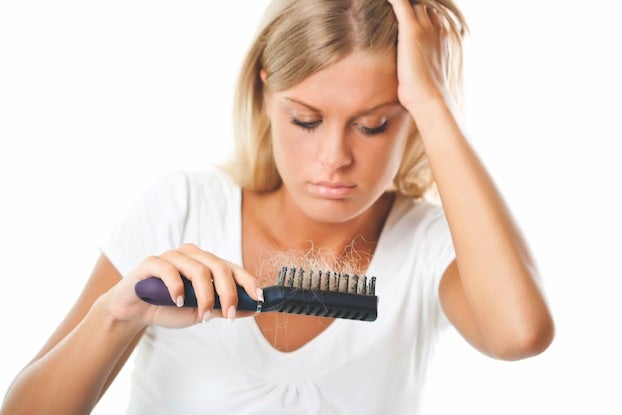Hair loss after COVID: Here’s what you need to know
Published 5:24 am Wednesday, October 5, 2022

- (Metro Creative Services)
By AnaClare Barras
Our understanding of COVID is changing all the time. Though some things about the virus still remain shrouded in mystery, one of the things we know more about is the seemingly ever-growing list of long-term side effects following COVID-19 infection.
Most are aware of the loss of taste and smell that some claim never return to their original state, but hair loss has also been frequently reported as a post-COVID symptom.
“All my coworkers have seen it with their clients,” said Keli Perry, a hairdresser at Rain Salon and Day Spa in Monroe. “It’s something we’ve been seeing for a while. It was the worst during the first two strains of COVID. One of my coworkers said her client lost 75 percent of her hair.”
“I had a client lose a good 45-50 percent of her hair,” said Ashley Hidalgo, a hairdresser at K & Co salon. “It took several months for it to come back right.”
In a study conducted by the Centers for Disease Control and Prevention, 58.3 percent of respondents with a positive SARS-CoV-2 test result reported hair loss as a symptom lasting more than four weeks, making hair loss the most-frequently reported long-term symptom of COVID.
Dr. Melissa Rasberry, a family medicine physician at Imperial Health, said that while hair loss might be one of the most alarming side effects of COVID, it is typically only temporary.
“A significant loss of hair can occur after any sort of physiological stressor,” Rasberry said. “So, we see sometimes like with women after they have a baby, they’ll lose hair. We see it after illness, or anything that can create a physiological change in their bodies.”
Thus, it is not the COVID virus causing the hair loss, but rather the stress brought about by it. A phenomenon known as telogen effluvium is what causes the post-COVID hair loss, and it’s a condition in which hair sheds in response to a stressor.
According to Rasberry, hair goes through three different stages. At any given time, about 90 percent of our hair is in a stage of growth, and the remaining 10 percent is in a stage of resting. At the end of this stage, hairs are shed from their follicles and gradually replaced by new hairs, and the cycle continues.
“Following any sort of physiological stressor, we see a large portion of that normal 90 percent of hair in the growth stage transferred to the falling out stage prematurely,” Rasberry said. “If you think about it, on average, you’re losing about 1 percent of your hair at a time, and when you transfer from something like that to about 30 percent or more, that’s a noticeable difference.”
The shedding can start shortly after an infection, but it’s usually six to eight weeks after a physiological stressor. Raspberry said hair growth will return after the illness resolves, but because hair growth happens so slowly, it takes a while to have noticeable growth to replace that, sometimes six to 12 months.
As anxiety-provoking as it may be, Rasberry said COVID-related hair shedding is temporary, and the hair will return.
“Replacing any sort of deficiencies and getting rid of any sort of stimuli that may precipitate physiological stress … is important to allow hair to grow back and stop further loss,” she said.
“I’ve heard taking collagen has helped some women grow their hair back,” Perry added. “Taking supplements with zinc and biotin help with hair growth, but they’d need to talk with their doctor to make sure they’re getting the correct dosage.”
“A good haircut and patience goes a long way,” Hidalgo said.





